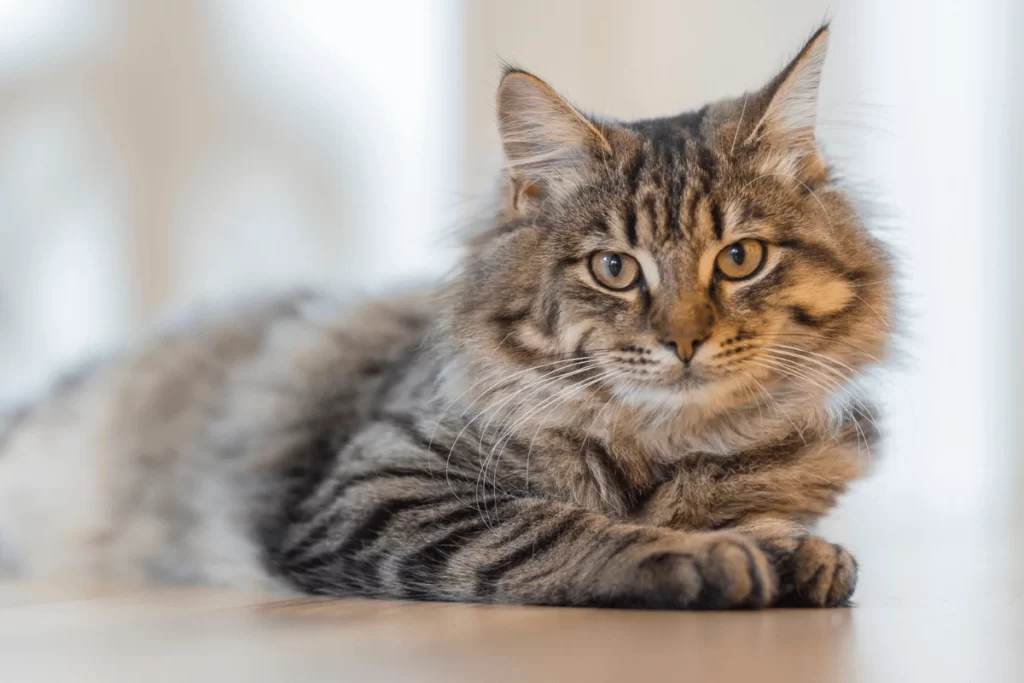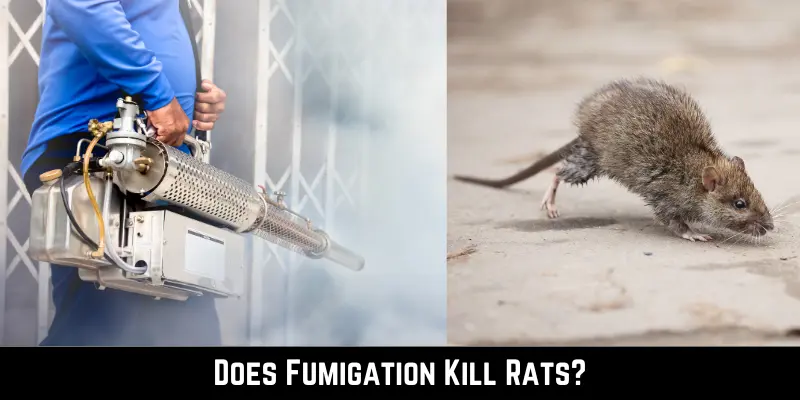Rats are the most annoying and harmful pests. Removing them from your home or property has always been a challenging task. If you’ve tried poison and traps, but the rats are still winning, you should fumigate the area to remove them. Now, the question is, does fumigation kill rats?
Yes, fumigation can kill rats. It typically involves using chemical agents in gas or vapor form to eliminate rats. While these compounds may kill some rats, they may not reach all areas where rats may be hiding, and rats are known to be chemically resistant.
Are you tired of using other remedies to ward off rats, but all in vain? If so, read the below guidelines to remove rats permanently.
What Is Fumigation?
Fumigation is a pest control approach that employs gaseous insecticides known as fumigants to eradicate or control pests in confined spaces. In most cases, this method is utilized to treat infestations in buildings, stored goods, and agricultural commodities. Fumigation works well against various pests, such as nematodes, fungi, rodents, and insects.
During the fumigation, the affected area is sealed to prevent fumigant escape. Then, the fumigant is released at a high enough concentration to kill the target pests. The fumigants infiltrate the materials in the treated space, reaching concealed or difficult-to-reach locations where pests may present.
Journal of Stored Product Research claims that methyl bromide and phosphine are the most popular chemical fumigants for controlling insects in grains. Other chemicals include sulfuryl fluoride and formaldehyde. However, the choice of fumigant depends on the type of pests, the specific situation, and any regulatory restrictions.
Fumigation V/S General Pest Control
Both fumigation and general pest control are ways for managing and eliminating pests. However, they differ in terms of their application, purpose, and the types of pests they target.
Fumigation involves gaseous pesticides (fumigants) to eliminate pests in an enclosed space. On the other hand, general pest control includes various methods, like chemical, biological, and mechanical means to ward off pests.
Fumigation is used to control severe infestations of pests, while general pest control methods are used to eliminate pests from residential and commercial areas. Moreover, fumigation is for specific, more difficult pests, whereas general pest control tackles a larger spectrum of pests. Fumigation necessitates careful handling because of potentially harmful chemicals.
Chemicals can present in general pest control procedures, but there is frequently greater freedom in selecting less hazardous options. Additionally, fumigation is more effective than general pest control methods for large and severe infestations.
When to Use Fumigation?
Although fumigation is not the first choice to ward off rats, below are some situations in which you can use fumigation.
- If you have a severe rat infestation and have tried all other methods to remove them, but all in vain. In this case, you use fumigation to kill rats.
- You can use fumigation if rats are building their nests in hard-to-reach places.
- Fumigation works in large, open commercial or industrial locations where there are fewer threats to human health.
- You can also use fumigation in agricultural settings to control rats in storage buildings or open areas where other treatments are unfeasible.
- Moreover, it’s crucial to ask for help from a professional pest control company before employing any method to kill rats.
Ways to Get Rid of Rats with Fumigation
Below are some ways that you must follow to get rid of rats with fumigation.
Take Yourself and a Few Things Out of Your House

The first step that you should do before fumigating the area is to remove yourself from the area where you want to kill rats. You can’t return to your home once the fumigation procedure begins, so plan to stay somewhere else. Your fumigator will offer you an exact time frame for leaving the house. No one can enter the house again until the fumigator clears it.
Moreover, there are several things you should remove from your home before the fumigation process. Fumigants are hazardous to pets, fish, reptiles, and house plants, so you should remove them before fumigation. Additionally, take out consumables like medication, pet food, dental supplies, and unsealed food items.
Open All the Doors of Your House

Access all areas through open doors, including those leading to cabinets, closets, appliances, safes, the attic, and the basement. You should also open all cabinets, as well as drawers in your dresser and desk. Additionally, raise all blinds and drapes to allow the fumigator easy access to the windows.
Expose Exterior Foundation and Remove Devices for Proper Tenting
Remove any gravel or mulch and relocate any plants to reveal the external foundation. If necessary, dig up your landscape to make way for the tenting. Remove or lower any gadgets on your roof or the exterior of your property for the fumigation to be effective. It comprises antennas, weathervanes, chimney stacks, and motorized awnings.
Make Access to Closets and Storage Rooms

For the fumigation to be effective, the fumigants must reach every section of your home. Check for clear access to closets, storage rooms, and crawl spaces. It will allow the fumigants to reach hard-to-reach sections of your home.
Disconnect Appliances and Turn Off All Heat Sources
Several fumigants can undergo corrosive or other reactions when exposed to a heat source. If you have natural gas in your home, make sure your gas company turns it off and locks it out at the meter. It will prevent natural gas buildup within the tent in case of a gas line leak.
Moreover, some fumigators require that you unplug and turn off any appliances, laptops, or heaters. You may also need to turn off pilot lights and suspend gas service during the fumigation procedure.
What Is a Rat Fumigation Bomb?

A rat fumigation bomb, also known as a rodent smoke bomb, is a pest management technique to eradicate rodents, mainly rats, from an enclosed environment. They function similarly to gopher and mole smoke bombs. These devices normally work by delivering toxic smoke or gas to rats, forcing them to flee or die.
The active substances in fumigation bombs vary, although they frequently contain chemicals like phosphine or other pesticides. You are instructed to place the fumigation bomb in the infested area to ignite it. After that, seal the area for a specified period to allow the fumigant to disperse and eliminate the rodents.
Above all, it’s crucial to remember that using fumigation bombs for pest management, including rat fumigation bombs, should be done with prudence.
Rat Fumigation Chemicals
Rat fumigation often entails the application of specialized chemicals or fumigants meant to eradicate or repel rats. Below are some chemicals used in fumigation.
Rodenticides
These are chemicals designed specifically to kill rats. Common rodenticides include anticoagulants like warfarin, bromadiolone, sodium fluoroacetate, and brodifacoum. These chemicals kill rats by preventing normal blood clotting and causing internal hemorrhaging. Fumigants like sulfur dioxide, carbon monoxide, hydrogen cyanide, and methyl bromide are also potent rodenticides.
You can mix phosphorus paste, barium carbonate salt, and powders such as zinc phosphide, white arsenic, thallium sulfate, strychnine, strychnine sulfate, and calcium cyanide with bait and place where rats can find and eat them. As the rats eat them, they’ll die due to disruption of their nervous system. Moreover, Science of the Total Environment documented the impact of rodenticides on wildlife.
Fumigants
These chemicals or substances are used to produce a gas or vapor that is poisonous to pests such as insects, rodents, fungi, and nematodes. You can spray these chemicals in a confined location to control pests in stored products, structures, or soil. These chemicals include methyl bromide, phosphine, sulfuryl fluoride, chloropicrin, and 1,3-dichloropropene.
Methyl bromide was a popular fumigant, but its usage has been limited due to its ozone-depleting effects. Phosphine is used for fumigating stored grains and other commodities. Sulfuryl fluoride is a colorless and odorless gas used to control pests such as termites. Chloropicrin is used to supplement other fumigants. While, 1,3-dichloropropene is used to control nematodes, fungi, and other soil-borne pests.
How Much Does Rat Fumigation Cost?

The cost of rat fumigation might vary depending on several factors, including the magnitude of the infestation, the type of property, and its geographic location. Furthermore, the type of fumigation and the pest control service provider can have an impact on the overall cost.
However, the average cost of home fumigation is $1 to $4 per square foot, which means that fumigating a 2,000-square-foot home might cost between $2,000 to $8,000
Fumigation is only one way of rat control; other methods, such as trapping, baiting, and exclusion, may have varying prices. It should be noted that fumigation is often employed for serious infestations or in certain conditions where other treatments may be ineffective. Moreover, it is advised to request estimates from nearby pest control businesses to obtain an exact cost estimate.
Advantages and Disadvantages of Fumigation to Kill Rats
Fumigation is a method commonly used to eliminate rats and other pests. It does, however, have certain advantages and disadvantages.
Advantages
Fumigation can be extremely effective in enclosed settings where other approaches may be limited. It can provide comprehensive treatment, reaching areas that may be difficult to access using other methods.
When compared to other approaches, fumigation frequently produces faster results. Once applied, the fumigant can swiftly disperse across the treated area, impacting the target pests. Moreover, fumigation can be less disruptive than other approaches such as trapping or baiting, particularly in big or commercial environments.
Disadvantages
Fumigants are toxic and pose serious health issues to your health. Therefore, you should follow proper precautions while fumigating the area. Moreover, they have environmental consequences, harming non-target organisms and affecting air quality.
Moreover, some fumigants may leave residues that are harmful to humans or animals if you don’t adequately clean or vent the area after treatment. Although fumigation usually produces quick results, it may not give long-term residual control. Fumigation is more expensive than the general pest control method. Pests can acquire resistance to fumigants over time, limiting the efficacy of this technique.
Bottom Line
Rats are the most annoying and harmful pests and getting rid of them is always a challenging task. You may use various methods to ward them off, including fumigation. Fumigation is an effective way to kill rats because it involves chemicals, like methyl bromide and phosphine. These chemicals disrupt the nervous system of rats and ultimately cause their death.
However, there are some cons of using fumigation, including harmful residue that may pose serious health threats to your life. Moreover, fumigation requires expert practice to employ, therefore, you should always ask for help from a professional to employ this method.




